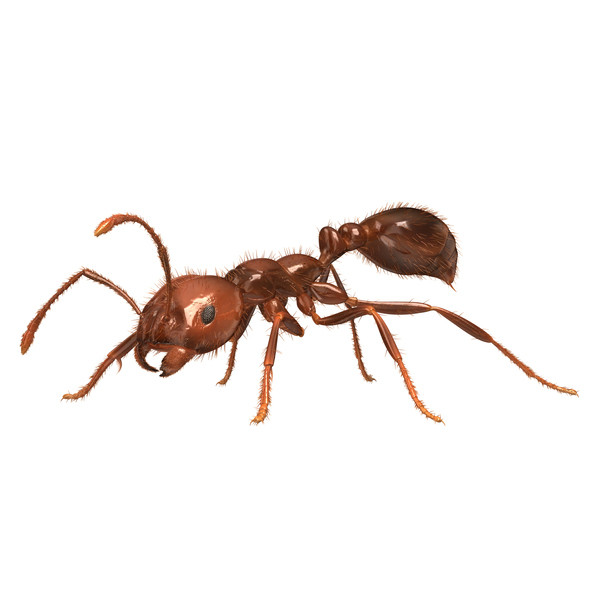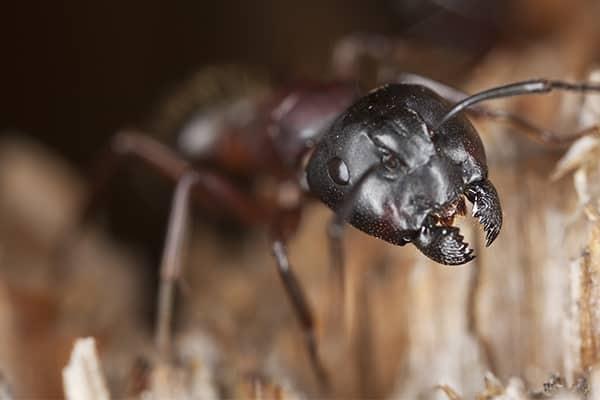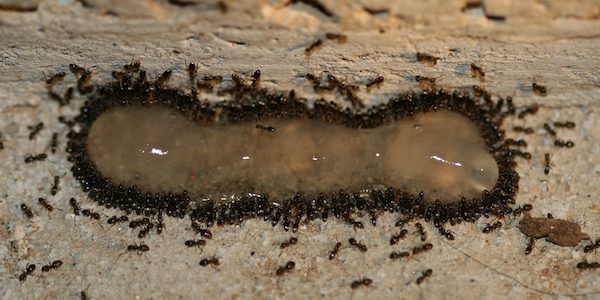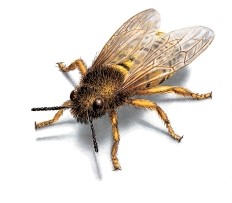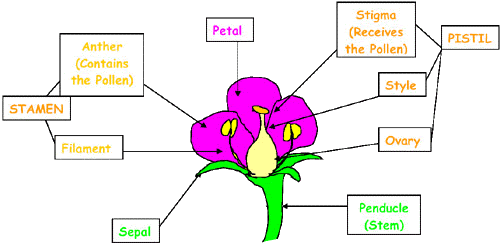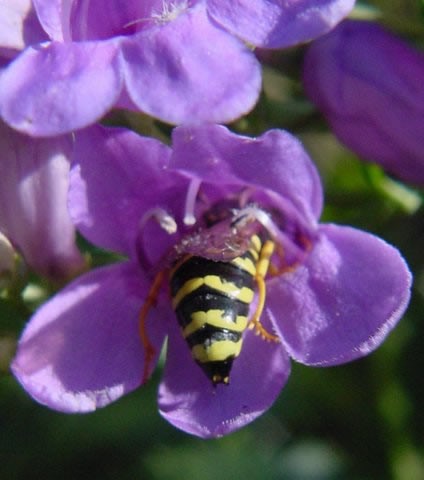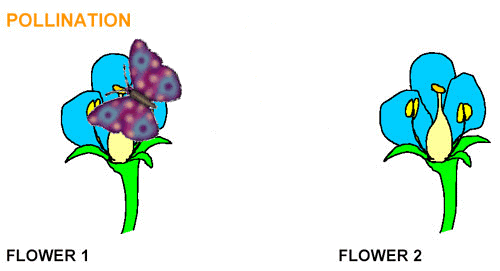How to Prepare for Pest Control Service
Hiring a professional for pest control service does not mean you can just simply call for service, then sit back and wait. Effective elimination requires a partnership between the professional pest control operators (PCOs) and the homeowner, with both taking action to get the pests out–and them keep out.
While the preparation required of the homeowner is fairly standard, most PCOs will provide you with a list of specific prep steps to be completed before their visit. Because a lack of preparation could make a treatment unsafe or cause reinfestation of the entire home or building, many PCOs will not treat areas that are not prepared to their specifications.
Today, professionals most often use gel bait insecticides to control and eliminate cockroaches. This requires the placement of small beads of gel bait in areas where cockroaches are known or expected to harbor, travel, or feed. In addition to cleaning your home before the pest control visit, you should commit to keeping your home as neat and clean as possible for long-term success. This helps to eliminate food sources for the insects, making the bait more attractive.
Pets can get fleas from outside or from being around other animals that have fleas. Whether you purchase flea control products for your use or you choose to work with a pest control company, the home, pet(s), and yard (as applicable) must be all treated at the same time
A few of the standard preparation steps recommended before extermination include:
Washing all pet bedding in hot water or destroying it
Vacuuming carpeting and mopping hard-surface floors, including along walls and inside closets
Cleaning or vacuuming furniture, especially between and under cushions

Pest Control
Are you looking for a way to keep your family safe from pests, but aren’t sure where to begin? eco-friendly pest control services are specifically designed to treat and prevent pests that are common. We use a highly effective, family-friendly pest management approach that brings you the instant relief you expect along with the long-term protection you deserve
Why Pest Control makes sense for you
We understand how important keeping your family safe and your home pest free is to you. Our qualified exterminators use treatments that are safer for your entire family, including the four-legged members
Are your pest control products and procedures safe?
We mean business when it comes to the safety of families, pets, and property. Our pest management procedures meet the EPA’s Pesticide Environmental Stewardship Program, which is all about reducing pesticide risk in all environments. We are also proud to be part of just 1% of United States companies that are GreenPro certified, which allows you to be confident in choosing a green company
Which pests will you keep away from my house?
We can take care of almost any pest you can imagine, in fact, we can protect you and your family from over 50 different types. Our general pest control services take care of ants, roaches, spiders, rodents, and many other common household pests. We can also protect you from mosquitoes, termites, and eliminate bed bug problems.
Pest Control and Exterminator License
Business License Compliance Package
We do the research and provide you with all the licensing requirements and forms. For just $139 per location, you get the licensing and permit answers you need to keep your business in compliance. With our Business License Compliance Package, we’ll research your business so we can tell you which business licenses, permits, and tax registrations you need for your geographical location and type of business. We also include the actual applications, so you can quickly take care of your compliance requirements.
The great thing about the pest control business is: you’ll never be without customers! Until they come up with a bug spray that will kill all the bugs in the world, you’ll have more work than you can handle. But to start a business in pest control or extermination, you first need a pest control license.
Who Needs a Pest Control/Exterminator License?
If you will be involved in applying pesticides, commercial or private, you need a pest control license. Here are just a few of the roles that require this type of health license:
Private pest control companies
Commercial exterminators
Pesticide contractors
Companies that treat wood for termites
Companies that inspect irrigation systems for chemigation
Pesticide container recycling companies
Requirements for Your Exterminator License
Every state has its own requirements for becoming a licensed pest control professional. Check with your state’s business licenses, permits & tax board to find out what you need to get your business license. More than likely, you will need to be at least 18 and have a high school diploma or equivalent. Next, you will need to take certain education courses or training to ensure that you know how to properly and safely apply all kinds of pesticides. Your local business licensing board can direct you to the appropriate program for this. You will need to pass a pest control license exam.
Your state may also require you to work in pest control a certain number of hours before you will quality for your pest control license.
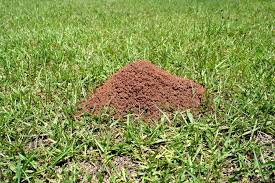
PRE-REGISTRATION FOR PESTICIDES TESTING
Due to the ongoing state of emergency declared by Governor on March 6, 2020 in response to the COVID-19 virus outbreak and subsequent directive that provision of all in-person government services cease effective March 17, 2020, in response to the need for the use of pesticides for the production of food and reduction of pests, including the need for application of anti-microbial pesticides
Under current COVID-19 meeting restrictions, face-to-face meetings for CEU courses will not be available in the near future. All courses being approved for CEU credits are only available online. The approved courses and times can be viewed on our Agriculture and Structural CEU Schedules.
For structural applicators, the University of Kentucky has developed an on-line short course for Category 7 applicators to obtain their required CEUs. The program will offer CEU classes from October 23 through December 18 on every Friday from 8:00 a.m. until 10:00 a.m. You can view registration requirements at the structural CEU schedule.
PEST CONTROL SERVICE FREQUENTLY ASKED QUESTIONS
Why Do I Need Pest Control Services?
If you’re inquiring about pest inspection and/or pest control, chances are you’ve tried to solve the issue yourself. While taking things into your own hands is great in some instances, pest control almost always requires more strategy and attention than you can give it. More often than not, homeowners tend to lack the expertise and time to handle most pest-related situations that are commonly encountered in or around a home or business.
How Are Pests Getting in My Home?
There are numerous ways that pests can enter a home. Ants, roaches, and even mice can enter through impossibly tiny cracks and crevices as they search for food and shelter. To lessen the chances of pests intruding into your home, be sure to keep any branches, shrubs, piles of firewood, decorative rocks, and any other aspect of landscaping well-maintained.
For example, if you’ve got a pile of firewood adjacent to your home, be sure to roll around the logs every so often to decrease the chance of pests beginning to form nests in the area, or have them raised off the ground. Properly stacking any piles of firewood would also be beneficial and optimal.
Can I Get Rid of Pests on My Own?
There are several temporary solutions that may work for a short period of time, but in our experience, continued pest control is achieved through going above and beyond normal practices
Do You Use Pet and Kid Friendly Pest Solutions?
Pest Control’s first priority is the safety and happiness of our customers, as well as being as environmentally friendly as possible. All of our materials are EPA approved and biodegradable and all technicians have been thoroughly trained on industry safety regulations and guidelines. The products we use are the same products that are used on sensitive areas, such as schools and hospitals. We take pride in providing pet friendly and kid friendly pest solutions to our clients.
